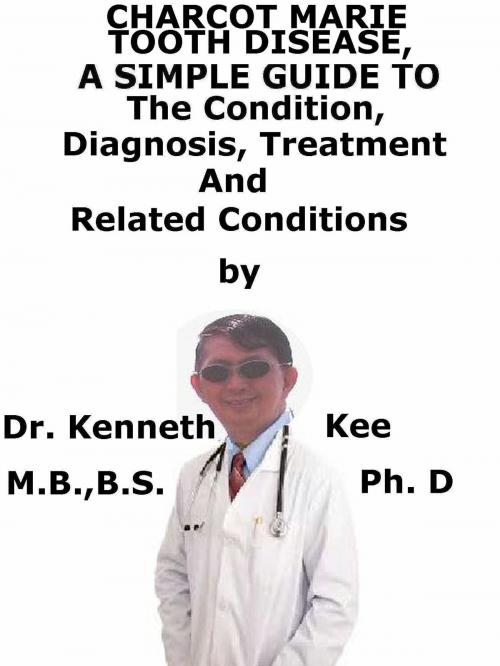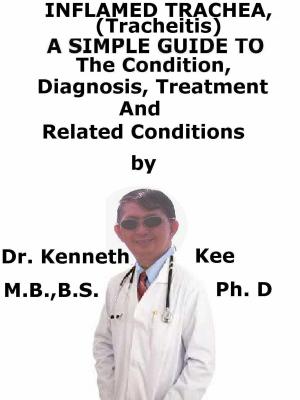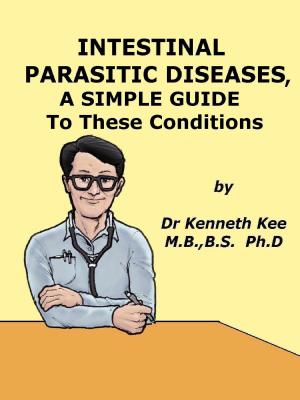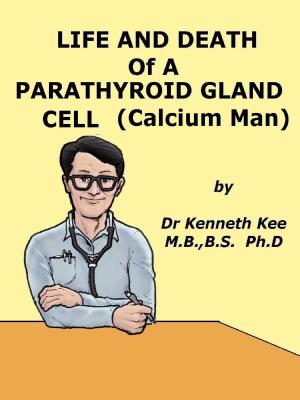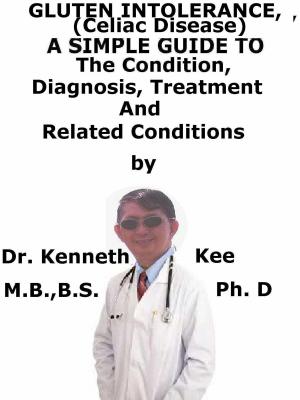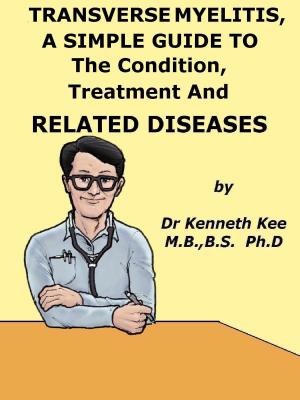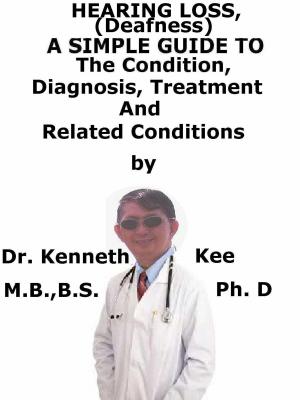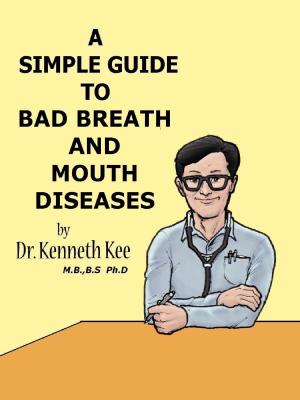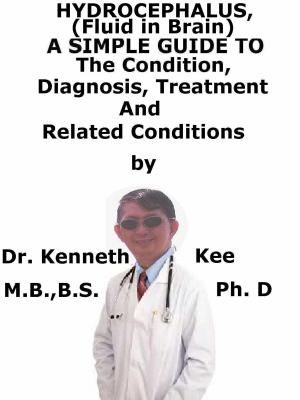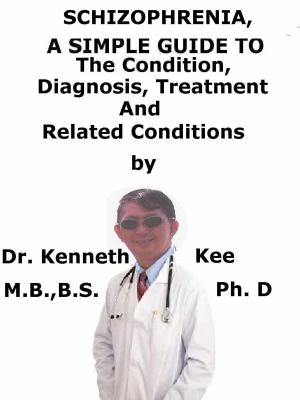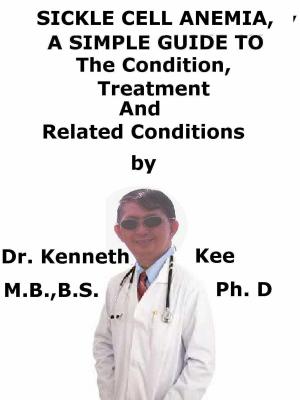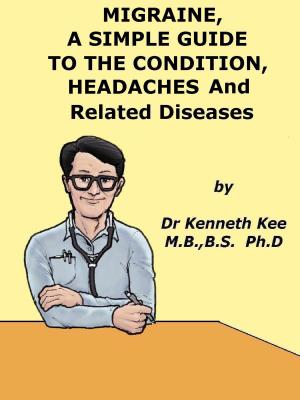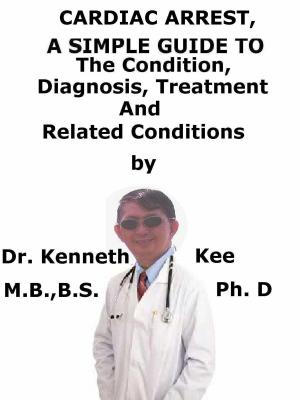Charcot Marie Tooth Disease, A Simple Guide To The Condition, Diagnosis, Treatment And Related Conditions
Nonfiction, Health & Well Being, Health, Ailments & Diseases, Genetic, Medical, Specialties, Internal Medicine, Neurology| Author: | Kenneth Kee | ISBN: | 9781370767625 |
| Publisher: | Kenneth Kee | Publication: | April 18, 2017 |
| Imprint: | Smashwords Edition | Language: | English |
| Author: | Kenneth Kee |
| ISBN: | 9781370767625 |
| Publisher: | Kenneth Kee |
| Publication: | April 18, 2017 |
| Imprint: | Smashwords Edition |
| Language: | English |
Charcot-Marie-Tooth disease (CMT) is one of the most frequent inherited neurological disorders, involving about 1 in 2,500 people in the USA.
CMT, also termed hereditary motor and sensory neuropathy (HMSN) or peroneal muscular atrophy, consists of a group of disorders that affect peripheral nerves.
Disorders that involve the peripheral nerves are called peripheral neuropathies.
Charcot-Marie-Tooth (CMT) disease is a heterogeneous cluster of inherited peripheral neuropathies in which the neuropathy is the main effect of the disorder
The normal CMT phenotype affects distal limb muscle wasting and sensory loss, with proximal progression over time.
The disease course is different, indicating both genotypic and phenotypic heterogeneity.
Autosomal dominant inheritance is the most frequent mode of inheritance but autosomal recessive, and CMT X-linked (CMTX) forms have also been recognized.
Most autosomal dominant forms are of the CMT type 1 (CMT1) subgroup.
CMT1A is the most frequent type.
CMTX1 (X-linked, dominant) is the second most frequent type.
Online Mendelian Inheritance in Man (OMIM) gives detailed gene locus and abnormality data:
There are many forms of CMT disease, such as CMT1, CMT2, CMT3, CMT4, and CMTX.
The neuropathy of CMT involves both motor and sensory nerves.
Motor nerves produce muscles to contract and manage voluntary muscle activity such as speaking, walking, breathing, and swallowing.
A normal sign is weakness of the foot and lower leg muscles which may result in foot drop and a high-stepped gait with frequent tripping or falls.
Foot deformities, such as high arches and hammertoes (a disorder in which the middle joint of a toe bends upwards) are also normal signs due to weakness of the small muscles in the feet.
Also, the lower legs may have an inverted champagne bottle appearance because of the loss of muscle bulk.
Afterward in the disease, weakness and muscle atrophy may occur in the hands, resulting in problem with performing fine motor skills (the coordination of small movements typically in the fingers, hands, wrists, feet, and tongue).
The onset of symptoms is most often in adolescence or early adulthood, but some patients develop symptoms in mid-adulthood.
Even though in rare cases, patients may have respiratory muscle weakness, CMT is not considered a fatal disorder and people with most forms of CMT have a normal life expectancy.
In the neurological examination a doctor will check for presence of muscle weakness in the patient's arms, legs, hands and feet, reduced muscle bulk, decreased tendon reflexes, and sensory loss.
Doctors check for presence of foot deformities, such as high arches, hammertoes, inverted heel, or flat feet.
A specific feature that may be found in people with CMT1 is nerve enlargement that may be palpated through the skin.
These enlarged nerves, termed hyper-trophic nerves, are caused by abnormally thickened myelin sheaths.
If CMT is suspected, the doctor may require electrodiagnostic tests.
This testing is made of two parts: nerve conduction studies and electromyography (EMG).
A nerve biopsy requires excising a small piece of peripheral nerve through an incision in the skin
Treatment:
Presently there are no effective treatments to reverse or decrease the underlying disease process.
Supportive treatment is given based on rehabilitation and surgical corrections of skeletal deformities.
Orthotic devices and Night splinting are extensively used.
Painkillers and anticonvulsants are useful treatments.
TABLE OF CONTENT
Introduction
Chapter 1 Charcot Marie Tooth Disease
Chapter 2 Causes
Chapter 3 Symptoms
Chapter 4 Diagnosis
Chapter 5 Treatment
Chapter 6 Prognosis
Chapter 7 Neuralgia
Chapter 8 Peripheral Neuropathy
Epilogue
Charcot-Marie-Tooth disease (CMT) is one of the most frequent inherited neurological disorders, involving about 1 in 2,500 people in the USA.
CMT, also termed hereditary motor and sensory neuropathy (HMSN) or peroneal muscular atrophy, consists of a group of disorders that affect peripheral nerves.
Disorders that involve the peripheral nerves are called peripheral neuropathies.
Charcot-Marie-Tooth (CMT) disease is a heterogeneous cluster of inherited peripheral neuropathies in which the neuropathy is the main effect of the disorder
The normal CMT phenotype affects distal limb muscle wasting and sensory loss, with proximal progression over time.
The disease course is different, indicating both genotypic and phenotypic heterogeneity.
Autosomal dominant inheritance is the most frequent mode of inheritance but autosomal recessive, and CMT X-linked (CMTX) forms have also been recognized.
Most autosomal dominant forms are of the CMT type 1 (CMT1) subgroup.
CMT1A is the most frequent type.
CMTX1 (X-linked, dominant) is the second most frequent type.
Online Mendelian Inheritance in Man (OMIM) gives detailed gene locus and abnormality data:
There are many forms of CMT disease, such as CMT1, CMT2, CMT3, CMT4, and CMTX.
The neuropathy of CMT involves both motor and sensory nerves.
Motor nerves produce muscles to contract and manage voluntary muscle activity such as speaking, walking, breathing, and swallowing.
A normal sign is weakness of the foot and lower leg muscles which may result in foot drop and a high-stepped gait with frequent tripping or falls.
Foot deformities, such as high arches and hammertoes (a disorder in which the middle joint of a toe bends upwards) are also normal signs due to weakness of the small muscles in the feet.
Also, the lower legs may have an inverted champagne bottle appearance because of the loss of muscle bulk.
Afterward in the disease, weakness and muscle atrophy may occur in the hands, resulting in problem with performing fine motor skills (the coordination of small movements typically in the fingers, hands, wrists, feet, and tongue).
The onset of symptoms is most often in adolescence or early adulthood, but some patients develop symptoms in mid-adulthood.
Even though in rare cases, patients may have respiratory muscle weakness, CMT is not considered a fatal disorder and people with most forms of CMT have a normal life expectancy.
In the neurological examination a doctor will check for presence of muscle weakness in the patient's arms, legs, hands and feet, reduced muscle bulk, decreased tendon reflexes, and sensory loss.
Doctors check for presence of foot deformities, such as high arches, hammertoes, inverted heel, or flat feet.
A specific feature that may be found in people with CMT1 is nerve enlargement that may be palpated through the skin.
These enlarged nerves, termed hyper-trophic nerves, are caused by abnormally thickened myelin sheaths.
If CMT is suspected, the doctor may require electrodiagnostic tests.
This testing is made of two parts: nerve conduction studies and electromyography (EMG).
A nerve biopsy requires excising a small piece of peripheral nerve through an incision in the skin
Treatment:
Presently there are no effective treatments to reverse or decrease the underlying disease process.
Supportive treatment is given based on rehabilitation and surgical corrections of skeletal deformities.
Orthotic devices and Night splinting are extensively used.
Painkillers and anticonvulsants are useful treatments.
TABLE OF CONTENT
Introduction
Chapter 1 Charcot Marie Tooth Disease
Chapter 2 Causes
Chapter 3 Symptoms
Chapter 4 Diagnosis
Chapter 5 Treatment
Chapter 6 Prognosis
Chapter 7 Neuralgia
Chapter 8 Peripheral Neuropathy
Epilogue
